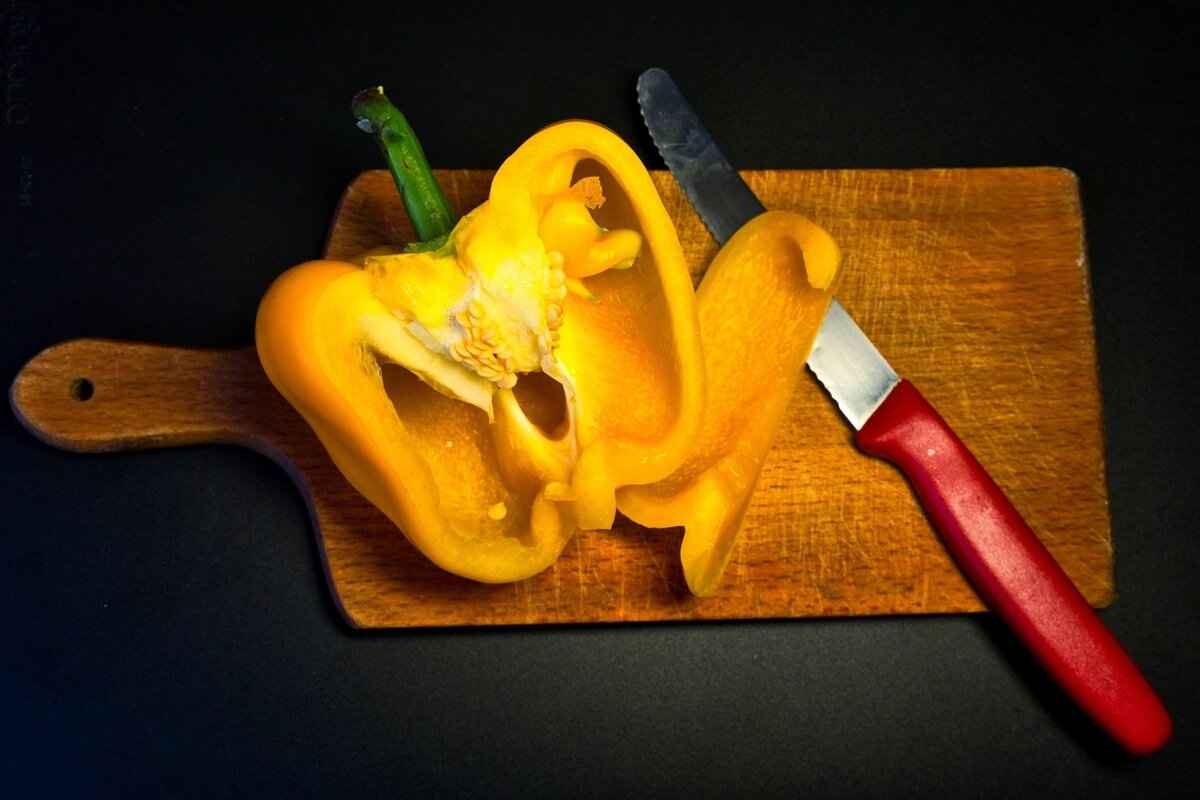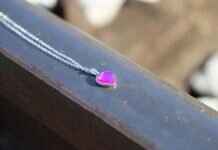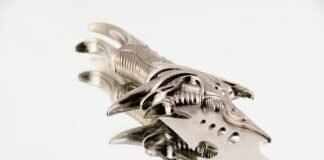This article provides a comprehensive guide on safely cutting alumina, focusing on techniques, tools, and best practices to prevent cracking during the process.
Understanding Alumina and Its Properties
Alumina, or aluminum oxide, is a ceramic material renowned for its exceptional hardness and thermal stability. Its unique properties make it a popular choice in various applications, from electronics to aerospace. However, these same properties pose challenges during cutting. Understanding alumina’s brittleness and tendency to crack is crucial for effective cutting. When subjected to improper techniques or tools, alumina can fracture, leading to wasted material and increased costs. Thus, knowledge of its properties is essential for anyone looking to cut alumina safely.
Choosing the Right Tools for Cutting Alumina
Selecting appropriate tools is vital for achieving clean cuts in alumina. The right tools can significantly reduce the risk of cracking and ensure precision. Here are some effective options:
- Diamond Blades: These blades are among the most effective tools for cutting alumina. Their hardness and design provide precision and minimize the risk of cracking.
- Water Jet Cutters: Utilizing high-pressure water mixed with abrasives, water jet cutters can slice through alumina without introducing thermal stress, making them an excellent crack-free solution.
Preparing the Alumina for Cutting
Proper preparation of alumina pieces before cutting is crucial to reduce the likelihood of cracking. Essential steps include:
- Cleaning the Surface: A clean surface is imperative for effective cutting. Any debris on the surface can interfere with the cutting process, leading to uneven cuts.
- Marking the Cut Line: Accurate marking of the cut line is vital for precision. Using a fine marker ensures that you stay on track during the cutting process.
Techniques for Cutting Alumina Safely
Employing the right cutting techniques is essential to prevent cracking. Here are some effective methods:
- Slow and Steady Cutting: Taking a slow and steady approach during cutting helps maintain control and reduces the risk of cracking. This method is key to achieving clean edges.
- Using Proper Feed Rates: Adjusting feed rates based on the cutting tool and material thickness is crucial for optimal results. A well-calibrated feed rate ensures a smoother cut.
Post-Cutting Techniques to Prevent Cracking
After cutting alumina, certain techniques can help prevent cracking during handling and finishing:
- Cooling the Cut Edges: Cooling the cut edges immediately after cutting can prevent thermal shock. Techniques such as using water or air cooling can be effective.
- Inspecting for Cracks: Regular inspection after cutting is necessary to identify any potential cracks. Early detection can prevent further damage during subsequent processes.
Common Mistakes to Avoid When Cutting Alumina
Understanding common pitfalls can help ensure successful cutting. Here are mistakes to avoid:
- Using Dull Tools: Dull tools can lead to increased pressure and a higher risk of cracking. Always ensure that your cutting tools are sharp and well-maintained.
- Neglecting Safety Precautions: Safety precautions are critical when cutting alumina. Always wear appropriate protective gear to safeguard against potential hazards.
Final Thoughts on Cutting Alumina Safely
Cutting alumina requires attention to detail and the right approach. By understanding its properties, choosing the right tools, and employing safe cutting techniques, you can effectively cut alumina without the risk of cracking. Always remember to prepare adequately, inspect your work, and maintain safety standards for the best outcomes.
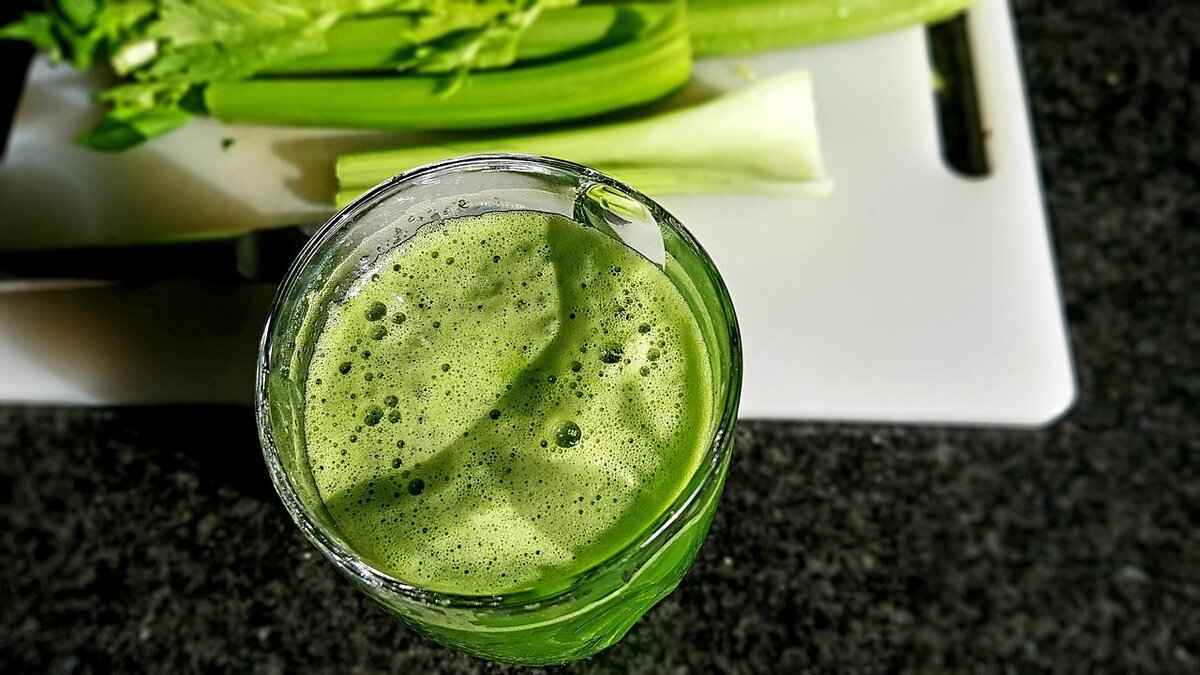
Understanding Alumina and Its Properties
Alumina, also known as aluminum oxide, is a ceramic material that holds significant importance in various industrial applications due to its exceptional properties. It is primarily recognized for its hardness, thermal stability, and chemical resistance. These characteristics make alumina an ideal choice for components that require durability and reliability under extreme conditions.
One of the key properties of alumina is its hardness, which is comparable to that of diamond. This hardness is measured on the Mohs scale, where alumina ranks at around 9. This makes it highly suitable for applications such as cutting tools and wear-resistant surfaces. In industries where abrasion resistance is critical, alumina’s hardness ensures longevity and performance.
In addition to its hardness, alumina exhibits remarkable thermal stability. It can withstand high temperatures without losing its structural integrity, making it an excellent material for applications in high-temperature environments, such as furnace linings and thermal barriers. This property is particularly beneficial in the aerospace and automotive industries, where materials are often subjected to extreme heat.
Alumina is also known for its chemical resistance, which allows it to endure harsh chemicals and corrosive environments. This makes it a preferred material in the manufacturing of chemical processing equipment and laboratory ware. Its ability to resist oxidation and other chemical reactions ensures that alumina components maintain their performance and do not degrade over time.
Moreover, alumina can be produced in various forms, including powder, ceramic, and single crystal forms, each having specific applications. For instance, alumina powder is widely used in the production of ceramics and as an abrasive material, while single-crystal alumina is utilized in cutting-edge technologies like semiconductor manufacturing.
Understanding these properties is crucial for industries that utilize alumina. The right knowledge allows for effective application, particularly in cutting and shaping processes. When cutting alumina, it is essential to consider its hardness and brittleness to avoid damaging the material. Employing the right techniques and tools can significantly enhance the cutting process, ensuring clean and precise cuts without causing cracks or fractures.
- Hardness: Comparable to diamond, making it suitable for cutting tools and wear-resistant surfaces.
- Thermal Stability: Withstands high temperatures, ideal for high-temperature applications.
- Chemical Resistance: Endures harsh chemicals, used in chemical processing and laboratory equipment.
- Form Variability: Available in powder, ceramic, and single-crystal forms for diverse applications.
In summary, alumina’s unique properties make it a versatile material in various industries. A comprehensive understanding of these characteristics is essential for effectively utilizing alumina, particularly in cutting and shaping processes. This knowledge not only aids in achieving optimal results but also helps in preventing potential damage during handling and processing.
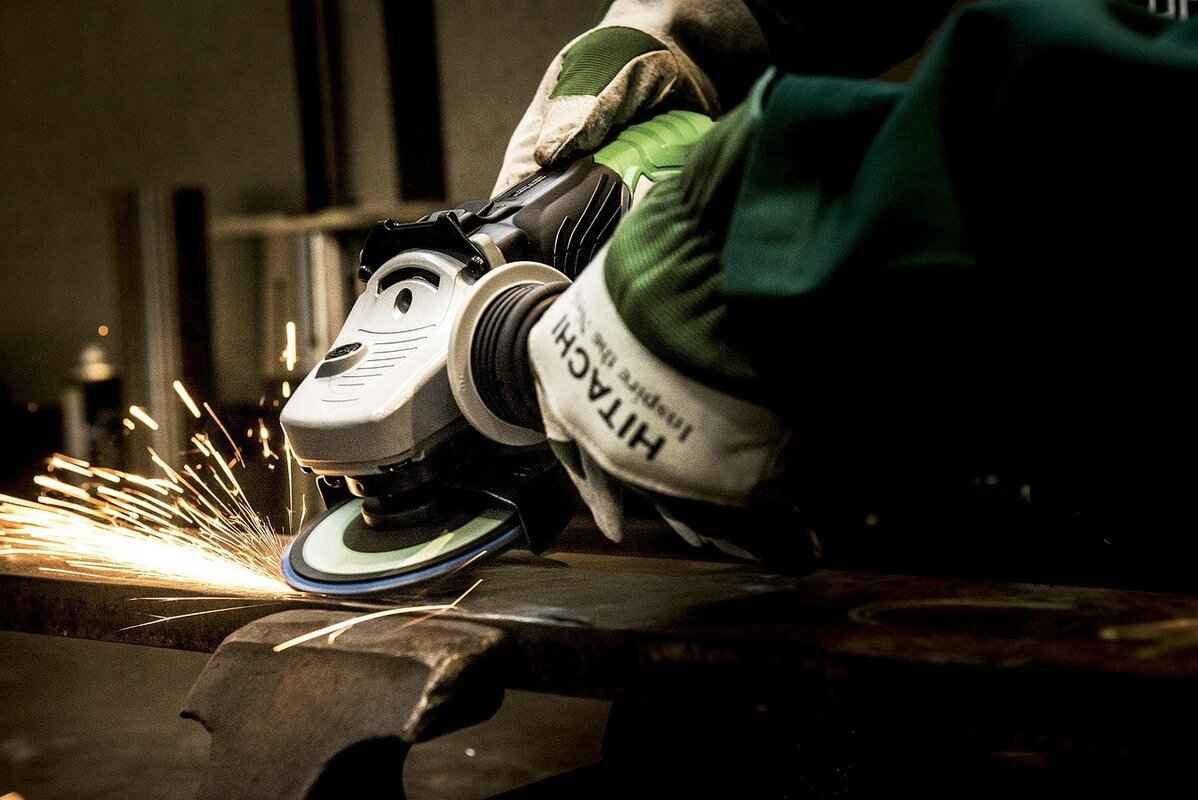
Choosing the Right Tools for Cutting Alumina
When it comes to cutting alumina, selecting the right tools is crucial for achieving clean cuts and minimizing the risk of damage. Alumina, known for its exceptional hardness and brittleness, requires specialized tools designed to handle its unique properties. In this section, we will explore various cutting tools and their suitability for working with alumina, ensuring that you can make informed decisions for your projects.
The choice of cutting tools can significantly impact the efficiency and quality of your cuts. Using inappropriate tools can lead to cracking, chipping, or even complete failure of the alumina piece. Therefore, understanding the characteristics of different cutting tools is essential for successful outcomes.
Diamond blades are widely regarded as one of the best options for cutting alumina. These blades are embedded with diamond particles, which provide superior hardness and cutting efficiency. The key benefits of using diamond blades include:
- High Precision: Diamond blades offer exceptional cutting accuracy, allowing for intricate designs and clean edges.
- Reduced Risk of Cracking: Their design minimizes the pressure exerted on the alumina, significantly lowering the chance of cracks.
- Longevity: Diamond blades have a longer lifespan compared to traditional cutting tools, making them a cost-effective choice in the long run.
Water jet cutters utilize a high-pressure stream of water, often mixed with abrasives, to slice through materials like alumina. This method offers several advantages:
- Crack-Free Cutting: The absence of heat during the cutting process prevents thermal stress, which is a common cause of cracking.
- Versatility: Water jet cutters can handle various thicknesses and types of materials, making them a flexible option for different projects.
- Environmentally Friendly: This cutting method produces minimal waste and does not generate harmful fumes, making it a sustainable choice.
CNC machining is another effective method for cutting alumina. This computer-controlled process allows for highly precise cuts and complex shapes. Advantages of CNC machining include:
- Automation: Reduces human error and increases efficiency, ensuring consistent results across multiple pieces.
- Complex Geometries: Capable of creating intricate designs that would be challenging with manual cutting methods.
- Material Efficiency: Optimizes material usage, reducing waste and costs.
When selecting the appropriate cutting tool for alumina, consider the following factors:
- Material Thickness: Different tools are suited for varying thicknesses of alumina, so assess the dimensions of your material.
- Desired Finish: Determine the finish quality you require, as some tools provide smoother edges than others.
- Project Complexity: For intricate designs, precision tools like diamond blades or CNC machines may be necessary.
In conclusion, the right tools for cutting alumina can make a significant difference in the outcome of your project. By understanding the capabilities of diamond blades, water jet cutters, and CNC machining, you can choose the best tool that meets your specific needs. Always prioritize quality and precision to ensure that your alumina cuts are clean and free from damage.
Diamond Blades
are considered one of the most effective tools for cutting alumina, a material known for its exceptional hardness and durability. The unique properties of diamond blades make them an ideal choice for achieving precise cuts while minimizing the risk of cracking. In this section, we will explore the advantages of using diamond blades, their design features, and best practices for optimal performance when cutting alumina.
One of the primary reasons excel at cutting alumina is their inherent hardness. Diamonds are the hardest known natural material, allowing them to effortlessly slice through tough substances like aluminum oxide. This hardness translates to a longer lifespan for the blade, reducing the frequency of replacements and ultimately saving costs in the long run.
Additionally, the design of diamond blades contributes significantly to their effectiveness. Most diamond blades feature a segmented rim, which helps in dissipating heat generated during the cutting process. This is crucial when working with alumina, as excessive heat can lead to thermal shock and cracking. The segments allow for better cooling and provide a more aggressive cutting action, ensuring clean cuts without damaging the material.
When selecting a diamond blade for cutting alumina, it is essential to consider the bond type used in the blade’s construction. There are different bonds available, such as metal, resin, and electroplated bonds. Metal bonds are generally preferred for cutting hard materials like alumina due to their durability and resistance to wear. On the other hand, resin bonds offer a smoother finish but may wear out faster under heavy use.
Moreover, the grit size of the diamond particles on the blade plays a crucial role in determining the quality of the cut. Finer grit sizes are ideal for achieving smoother finishes, while coarser grits are better suited for faster material removal. Understanding the specific requirements of your alumina project will help you choose the right blade for the job.
To maximize the effectiveness of diamond blades when cutting alumina, it is important to follow some best practices. Firstly, always ensure that the blade is properly aligned and securely mounted on the cutting machine. This prevents vibrations that can lead to uneven cuts or blade damage. Secondly, consider using a coolant during the cutting process. Water or specialized cutting fluids can help keep the blade cool and reduce friction, further minimizing the risk of cracking.
Lastly, regular maintenance of diamond blades is essential for maintaining their performance. After each use, clean the blade thoroughly to remove any debris or buildup that can affect cutting efficiency. Periodically inspect the blade for signs of wear or damage, and replace it as necessary to ensure optimal cutting results.
In summary, diamond blades are a top choice for cutting alumina due to their hardness, design features, and ability to produce precise cuts while minimizing the risk of cracking. By understanding the different types of diamond blades available and following best practices, you can achieve excellent results in your alumina cutting projects.
Water Jet Cutters
Water jet cutting technology has revolutionized the manufacturing industry, providing a highly efficient method for cutting various materials, including alumina. This section delves into the intricacies of water jet cutters, exploring how they work, their advantages, and their applications in cutting alumina.
What Are Water Jet Cutters?
Water jet cutters utilize a powerful stream of high-pressure water, often mixed with abrasives, to cut through materials. The process involves pressurizing water to extreme levels, which is then expelled through a small nozzle, creating a concentrated jet that can slice through even the toughest materials. The addition of abrasives, such as garnet, enhances the cutting capability, making it suitable for materials like alumina, which is known for its hardness.
Advantages of Using Water Jet Cutters
One of the most significant advantages of water jet cutting is its ability to produce clean, precise cuts without introducing thermal stress to the material. Traditional cutting methods, such as laser or plasma cutting, can generate excessive heat, leading to warping or cracking in sensitive materials like alumina. Water jet cutters, on the other hand, operate at lower temperatures, minimizing the risk of damage.
Moreover, water jet cutting is a versatile technique. It can handle a wide range of materials, from metals to ceramics, and is particularly effective for intricate designs and shapes. The ability to cut complex geometries without the need for tooling makes water jet cutters an invaluable asset in manufacturing.
Applications of Water Jet Cutters in Alumina Cutting
In industries where alumina is commonly used, such as aerospace, automotive, and electronics, water jet cutters play a crucial role. They are employed to create components that require high precision and surface finish. For instance, in the aerospace sector, water jet cutting is used to fabricate parts that must withstand extreme conditions without compromising structural integrity.
Additionally, the environmentally friendly nature of water jet cutting is worth noting. The process generates minimal waste, and since it does not produce harmful gases or fumes, it aligns with sustainability practices increasingly adopted by modern industries.
Best Practices for Using Water Jet Cutters
To achieve optimal results when cutting alumina with water jet cutters, certain best practices should be followed. First, proper setup and calibration of the machine are essential to ensure the correct pressure and abrasive flow rate. Regular maintenance of the equipment is also crucial to prevent malfunctions and ensure consistent performance.
Furthermore, operators should be trained to understand the nuances of the cutting process. Knowledge of the material properties and the specific requirements for alumina cutting can significantly enhance the quality of the cuts and reduce the likelihood of errors.
Conclusion
In summary, water jet cutters are an effective solution for cutting alumina, offering numerous advantages over traditional cutting methods. Their ability to produce precise cuts without thermal stress, coupled with their versatility and eco-friendliness, makes them an excellent choice for various applications. By following best practices and understanding the technology, manufacturers can leverage water jet cutting to achieve high-quality results in their projects.

Preparing the Alumina for Cutting
Proper preparation of alumina pieces before cutting is essential to ensure a successful outcome and significantly reduce the likelihood of cracking. This section outlines the critical steps involved in preparing alumina for cutting, emphasizing the importance of each stage in achieving optimal results.
- Cleaning the Surface: Before cutting, it is vital to thoroughly clean the alumina surface. Any dust, grease, or contaminants can interfere with the cutting process, leading to imperfections or cracks. Use a lint-free cloth and a suitable cleaning agent to remove any debris. Rinsing with water and allowing the pieces to dry completely is also recommended to ensure a pristine surface.
- Inspecting for Defects: Prior to cutting, inspect the alumina for any existing flaws, such as chips or cracks. Identifying these defects early can prevent further damage during the cutting process. If any significant defects are found, consider discarding the piece or using it for a different purpose.
- Marking the Cut Line: Accurate marking of the cut line is crucial for achieving precise cuts. Use a fine-tip marker or a scribe to clearly indicate where the cut will be made. This step not only guides the cutting process but also helps to minimize errors that could lead to cracking.
- Choosing the Right Cutting Orientation: The orientation of the alumina piece during cutting can affect the outcome. Ensure that the piece is positioned to minimize stress on the material. For example, cutting along the grain or in a way that reduces resistance can help reduce the risk of cracking.
- Pre-Heating the Material: In some cases, pre-heating the alumina can help reduce thermal shock during cutting. However, this must be done with caution, as excessive heat can weaken the material. A controlled heating process, where the alumina is gradually warmed to a specific temperature, can help achieve better results.
- Securing the Piece: Properly securing the alumina piece is essential for a stable cutting process. Use clamps or a vise to hold the material firmly in place, ensuring that it does not shift during cutting. This stability is crucial for maintaining precision and preventing cracks.
By following these essential preparation steps, you can significantly enhance the likelihood of a successful cutting process when working with alumina. Each stage plays a vital role in ensuring that the material is ready for cutting, ultimately leading to clean edges and minimizing the risk of cracking.
Cleaning the Surface
Cleaning the surface of alumina is a critical step that should never be overlooked when preparing for cutting. The presence of any debris, dust, or contaminants can significantly interfere with the cutting process, leading to undesirable outcomes such as uneven cuts or even cracking. A thorough cleaning ensures that the cutting tools can perform optimally, which is essential for achieving the best results.
- Why Clean the Surface? A clean surface is paramount because it provides a smooth and even area for the cutting tool to operate. Any particles that remain on the surface can act as an obstruction, causing the cutting tool to deviate from its intended path, which may lead to increased pressure and stress on the material.
- Benefits of Cleaning: Regular cleaning not only enhances tool performance but also prolongs the life of the cutting tools. When tools encounter less resistance, they remain sharper for longer periods, reducing the frequency of tool replacements.
- How to Clean Alumina: The cleaning process can be accomplished using several methods:
1. Start by using a soft brush to remove loose dust and debris.2. Use a damp cloth with a mild detergent to wipe down the surface. 3. Rinse with clean water and dry thoroughly to prevent moisture from affecting the cutting process.
It is also advisable to inspect the surface after cleaning. Look for any scratches or imperfections that may have been previously unnoticed. These can also contribute to problems during cutting. If necessary, a light sanding may be performed to ensure the surface is as smooth as possible.
In addition to physical cleaning, consider the environmental factors that can affect the cutting process. For example, ensure that the workspace is free from excess dust and that the humidity levels are controlled. High humidity can lead to moisture retention on the surface, which can adversely affect the cutting quality.
In summary, taking the time to thoroughly clean the surface of alumina before cutting is a vital step that contributes to better tool performance and superior results. By following proper cleaning procedures and maintaining a clean workspace, you can significantly reduce the risk of complications and enhance the overall cutting experience.
Marking the Cut Line
Accurate marking of the cut line is vital for precision when working with alumina. This process not only guides the cutting tools but also enhances the overall quality of the finished product. In this section, we will explore various techniques and tools that can aid in achieving the desired cut, ensuring that your project is executed flawlessly.
- Choosing the Right Marking Tools: The first step in marking the cut line is selecting appropriate marking tools. Options like pencils, markers, and scribe tools are commonly used. Each tool has its advantages, and the choice depends on the specific requirements of the project.
- Using a Straight Edge: To achieve a straight and accurate cut line, it is essential to use a straight edge. This could be a ruler or a specialized cutting guide. Aligning the straight edge with the desired cut line allows for precise marking.
- Measuring Twice: Before making any marks, always measure twice and cut once. This old adage holds true, especially when working with materials like alumina. Double-checking measurements helps avoid costly mistakes.
- Utilizing Templates: For intricate designs or repetitive cuts, consider using templates. Templates can be made from cardboard or other materials and can provide a consistent guide for marking multiple pieces.
Once the cut line is marked, it is crucial to ensure that the markings are visible and clear. Using contrasting colors can enhance visibility, especially on light or dark surfaces. Additionally, avoid using excessive pressure when marking to prevent any potential damage to the material.
Techniques for Enhanced Accuracy: To further improve accuracy, consider the following techniques:
- Lightly Scoring the Line: After marking the line, lightly score it with a scribe or utility knife. This technique creates a groove that guides the cutting tool and helps prevent deviations.
- Visual Inspection: After marking, visually inspect the line from different angles to ensure it aligns with your intended cut. This step can help catch any discrepancies before cutting begins.
In summary, the process of marking the cut line is foundational for achieving precision when cutting alumina. By employing the right tools and techniques, you can significantly enhance the accuracy of your cuts, ultimately leading to a successful project outcome. Remember, taking the time to mark accurately can save you time and materials in the long run.
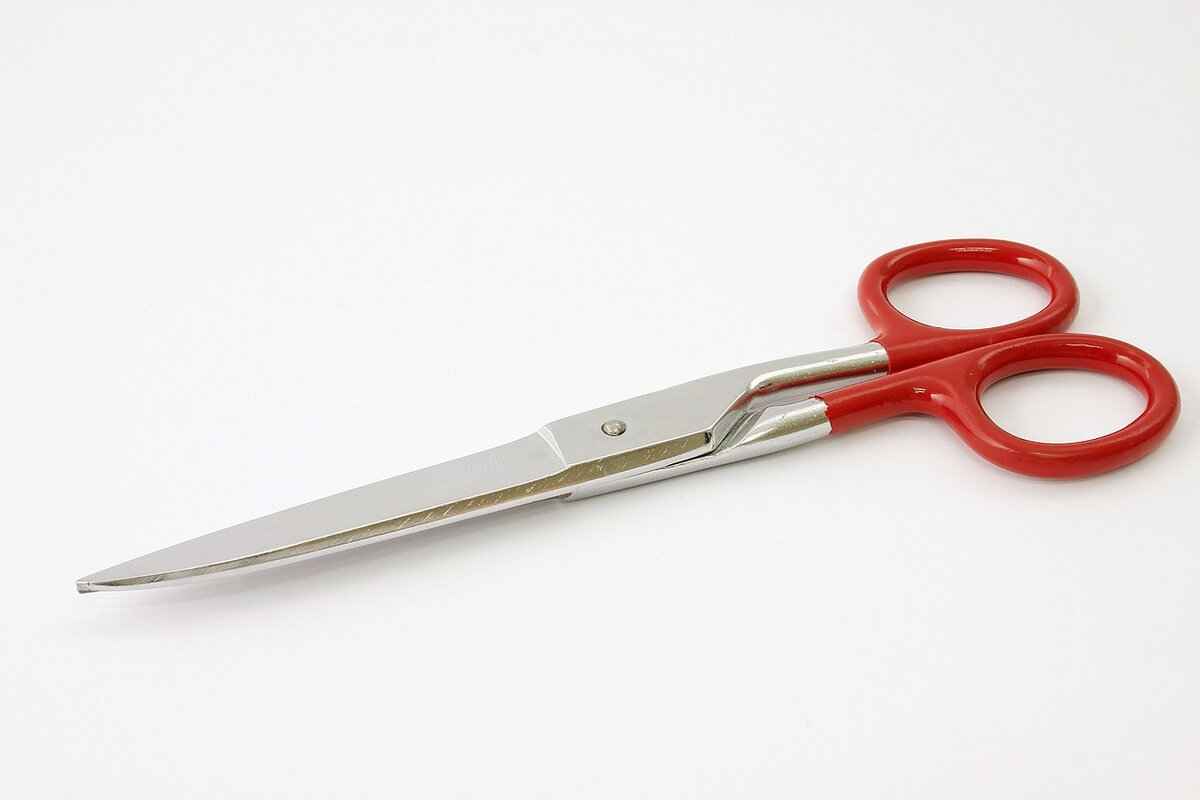
Techniques for Cutting Alumina Safely
Cutting alumina, a material renowned for its hardness and durability, requires careful consideration of techniques to prevent cracking. Employing the right methods not only enhances the quality of the cut but also extends the lifespan of the tools used. This section outlines effective techniques that ensure safe cutting of alumina while minimizing the risk of damage.
- Slow and Steady Cutting: One of the most effective techniques for cutting alumina is to adopt a slow and steady cutting pace. This method allows for better control over the cutting process, reducing the likelihood of sudden movements that could lead to cracking. By maintaining a consistent speed, operators can ensure that the cutting tool remains in contact with the material evenly, which is crucial for achieving clean edges.
- Using Proper Feed Rates: Adjusting the feed rate based on the thickness of the alumina and the type of cutting tool being used is vital. A feed rate that is too fast can increase the pressure on the cutting edge, leading to potential fractures. Conversely, a feed rate that is too slow may cause excessive heat buildup. Understanding the optimal feed rate for the specific cutting tool can significantly enhance cutting efficiency and safety.
- Employing Cooling Techniques: Implementing cooling techniques during the cutting process can effectively mitigate the risk of thermal shock, which is a common cause of cracking in alumina. Techniques such as using water or air cooling systems can help dissipate heat generated during cutting. Additionally, applying a lubricant can reduce friction and further aid in cooling the cutting area.
- Utilizing Proper Tool Angles: The angle at which the cutting tool approaches the alumina can greatly influence the cutting outcome. Maintaining the appropriate angle helps in distributing the cutting forces evenly across the material, reducing stress concentrations that can lead to cracks. It is advisable to use tools designed specifically for cutting ceramics, as they are engineered to optimize performance at specific angles.
- Marking the Cut Line Accurately: Before initiating the cut, it is essential to mark the cut line accurately. This practice not only aids in achieving precision but also helps in planning the cutting strategy effectively. Utilizing fine markers or laser guides can enhance visibility and accuracy, ensuring that the cut follows the intended path without unnecessary deviations.
In conclusion, employing the right techniques for cutting alumina is essential for achieving optimal results while preventing cracking. By adopting a slow and steady approach, adjusting feed rates, utilizing cooling methods, maintaining proper tool angles, and marking cut lines accurately, operators can significantly enhance the quality of their cuts. These methods, when applied diligently, contribute to a safer and more efficient cutting process, ensuring that the integrity of the alumina material is preserved.
Slow and Steady Cutting
Cutting alumina requires a careful approach, particularly when aiming to achieve the best results without compromising the integrity of the material. One of the most effective techniques to ensure clean cuts and minimize the risk of cracking is taking a slow and steady approach during the cutting process. This method allows for greater control over the cutting tool and the material being cut, leading to superior outcomes.
When cutting alumina, the hardness of the material poses a unique challenge. A rapid cutting speed can generate excessive heat and stress, which may result in cracks or chips. By adopting a slower cutting speed, the operator can maintain a consistent pressure on the cutting tool, allowing it to effectively penetrate the material without overwhelming it. This not only preserves the structural integrity of the alumina but also results in cleaner edges that require less finishing work.
In addition to speed, the technique of maintaining a steady hand is crucial. Irregular movements can lead to uneven cuts and increase the likelihood of cracking. Operators should focus on keeping the cutting tool stable and aligned with the marked cut line. Using both hands to guide the tool can help achieve this stability, ensuring that the cut remains true to the intended path.
Another important aspect of the slow and steady cutting technique is the ability to monitor the cutting process closely. By cutting slowly, the operator can observe any changes in the material’s behavior, such as signs of stress or cracking. This immediate feedback allows for quick adjustments to be made, such as reducing pressure or altering the angle of the cut.
Furthermore, employing a cooling method during the cutting process can significantly enhance the effectiveness of the slow and steady approach. Keeping the cutting area cool helps to mitigate thermal stress, which is particularly important for brittle materials like alumina. Operators can use water or air cooling techniques to maintain a lower temperature at the cutting edge, further reducing the risk of damage.
In summary, a slow and steady cutting technique is essential for achieving optimal results when working with alumina. This method not only helps maintain control but also significantly reduces the risk of cracking. By prioritizing stability, monitoring the cutting process, and incorporating cooling methods, operators can ensure that they achieve clean, precise cuts while preserving the integrity of the material.
Using Proper Feed Rates
When it comes to cutting alumina, one of the most critical factors that can influence the quality of the cut is the feed rate. Adjusting feed rates based on the cutting tool and the thickness of the material is essential for achieving optimal results. In this section, we will delve into the significance of feed rates, how they can be optimized, and the impact they have on the cutting process.
The feed rate refers to the speed at which the cutting tool moves through the material. It is typically measured in units such as inches per minute (IPM) or millimeters per minute (MPM). A proper feed rate ensures that the tool cuts efficiently without causing excessive stress on the material, which can lead to cracking, especially in brittle materials like alumina.
- Tool Type: Different cutting tools, such as diamond blades or water jet cutters, have varying optimal feed rates. Understanding the tool’s characteristics is crucial for setting the right feed rate.
- Material Thickness: Thicker materials generally require slower feed rates to ensure that the tool can effectively penetrate without causing damage.
- Cutting Speed: The relationship between cutting speed and feed rate is vital; higher cutting speeds may necessitate adjustments in feed rates to maintain balance.
To achieve the best results when cutting alumina, it is important to optimize feed rates by considering several strategies:
1. Test Cuts: Conduct test cuts on scrap pieces to determine the ideal feed rate before proceeding with the actual work.2. Adjust Gradually: Make incremental adjustments to the feed rate based on the initial results. This allows for fine-tuning without risking damage.3. Monitor Tool Wear: As tools wear down, their effectiveness diminishes. Regularly check for wear and adjust feed rates accordingly to maintain cutting quality.4. Use Technology: Employ CNC machines or automated systems that can adjust feed rates in real-time based on feedback from the cutting process.
Using an incorrect feed rate can have detrimental effects on the cutting process. A feed rate that is too fast can lead to:
- Cracking: The increased pressure can cause the brittle alumina to crack, ruining the piece and necessitating additional work.
- Poor Surface Finish: Fast feed rates may result in rough edges and an unsatisfactory finish.
- Tool Damage: Excessive strain on the cutting tool can lead to premature wear or even breakage.
In summary, adjusting feed rates based on the cutting tool and material thickness is crucial for successful alumina cutting. By understanding the factors influencing feed rates and implementing strategies for optimization, operators can achieve cleaner cuts, enhance tool longevity, and minimize the risk of cracking.

Post-Cutting Techniques to Prevent Cracking
After cutting alumina, it is crucial to implement effective post-cutting techniques to prevent cracking during handling and finishing. The inherent properties of alumina, such as its brittleness and hardness, make it susceptible to damage if not handled properly. This section explores various strategies to ensure the integrity of alumina post-cutting.
- Cooling the Cut Edges
Cooling the cut edges immediately after the cutting process is essential to prevent thermal shock. When alumina is cut, the edges can become extremely hot, which may lead to rapid temperature changes that can cause cracks. One effective method for cooling is to use a water mist or a coolant spray that gently cools the edges without subjecting them to thermal stress. This technique not only stabilizes the temperature but also helps to maintain the material’s structural integrity.
- Inspecting for Cracks
Regular inspection after cutting is vital to identify any potential cracks. Employing a systematic approach to inspection can significantly reduce the risk of unnoticed damage. Use a magnifying glass or a microscope to examine the cut edges closely. If any cracks are detected, it is advisable to address them immediately, either through careful grinding or by discarding the piece if the damage is too severe. Early detection is key to preventing further damage during subsequent processes.
- Proper Handling Techniques
The way alumina is handled post-cutting can greatly influence its susceptibility to cracking. It is important to avoid applying excessive force or pressure when moving or placing the cut pieces. Always support the alumina adequately during transportation to minimize stress on the edges. Using padded tools or gloves can also help in reducing the risk of accidental drops or impacts that could lead to fractures.
- Storing the Cut Pieces
Proper storage of cut alumina is another critical factor in preventing cracking. Store the pieces in a dedicated area where they are not likely to be bumped or jostled. Utilize foam padding or soft cloths to cushion the pieces during storage. Additionally, it is advisable to keep the alumina away from extreme temperatures and humidity, as these environmental factors can contribute to material degradation and cracking.
- Finishing Techniques
When finishing alumina, the choice of techniques can also affect the risk of cracking. Employing gentle grinding or polishing methods that do not generate excessive heat is recommended. Using diamond polishing pads at lower speeds can help achieve a smooth finish without compromising the material. Always ensure that the tools are in optimal condition to avoid applying unnecessary pressure during the finishing process.
In summary, implementing these post-cutting techniques—cooling the edges, regular inspection, proper handling, appropriate storage, and careful finishing—are essential for maintaining the integrity of alumina. By following these practices, you can significantly reduce the likelihood of cracking and ensure the longevity of your alumina products.
Cooling the Cut Edges
When cutting alumina, one of the most critical steps to ensure integrity and prevent damage is immediately after the process. This action is essential to avoid thermal shock, which can lead to cracks and fractures in the material. In this section, we will explore effective methods for cooling cut edges and their significance in maintaining the quality of alumina.
Alumina is known for its exceptional hardness and thermal stability, but it is not immune to the effects of rapid temperature changes. During cutting, the material can heat up significantly due to the friction generated by the cutting tool. If the cut edges are not cooled promptly, the sudden temperature drop can create stress concentrations that lead to cracking. Therefore, implementing effective cooling techniques is crucial in preserving the structural integrity of alumina.
- Water Cooling: One of the most common methods is using water to cool the cut edges. This can be done by applying a continuous stream of water during the cutting process or spraying water immediately after cutting. The cooling effect of water helps dissipate heat quickly, reducing the risk of thermal shock.
- Air Cooling: For less intensive cutting operations, simply allowing the cut edges to cool in ambient air can be effective. This method is less efficient than water cooling but can be used in situations where water cannot be applied.
- Cooling Gels: Specialized cooling gels can also be applied to the cut edges. These gels are designed to absorb heat and can be particularly useful in applications where water is not suitable.
- Cooling Fans: Utilizing fans to blow cool air over the cut edges can enhance the cooling process. This method is often used in conjunction with other cooling techniques to provide additional heat dissipation.
It is essential to initiate the cooling process immediately after cutting. Waiting too long can allow the material to reach a temperature that increases the risk of cracking. Therefore, having a cooling plan in place before starting the cutting operation is advisable. This preparation ensures that cooling methods are readily available and can be implemented without delay.
To optimize the cooling process, it is beneficial to monitor the temperature of the cut edges. Using infrared thermometers can provide real-time data on the temperature, allowing operators to adjust their cooling methods accordingly. Maintaining a consistent temperature during and after the cutting process is vital for preventing thermal shock.
In summary, cooling the cut edges of alumina immediately after cutting is a fundamental practice to prevent thermal shock and maintain material integrity. By employing effective cooling methods such as water cooling, air cooling, and utilizing cooling gels or fans, operators can significantly reduce the risk of cracking. Additionally, timely cooling and temperature monitoring are essential for achieving the best results. By following these guidelines, you can ensure a successful cutting process while preserving the quality of alumina.
Inspecting for Cracks
Regular inspection after cutting alumina is not just a precaution; it is a critical step in ensuring the integrity of the material. Cracks can develop during the cutting process or may not be immediately visible. Therefore, conducting thorough inspections can significantly help in identifying any potential issues early on, preventing further damage during subsequent processes.
- Visual Inspection: Begin with a careful visual examination of the cut edges and surfaces. Look for any signs of cracks, chips, or irregularities. A magnifying glass can be useful for detecting fine cracks that may not be visible to the naked eye.
- Use of Non-Destructive Testing (NDT): Techniques such as ultrasonic testing or dye penetrant inspection can be employed to detect cracks that are not visible externally. These methods help in identifying internal flaws that could compromise the material’s strength.
- Regular Monitoring: Establish a routine inspection schedule, especially if the alumina pieces will be subjected to further processing or high-stress applications. Regular monitoring helps in catching any developing cracks early.
Why Early Detection is Crucial
Early detection of cracks can save both time and resources. If a crack is identified before the material is subjected to further processing, it can be repaired or discarded, thus preventing the risk of failure in the final application. This is particularly important in industries where alumina is used in critical components, such as aerospace or medical devices.
Moreover, addressing cracks promptly can also minimize safety risks. Cracked alumina can lead to catastrophic failures, causing injury or damage to equipment. Therefore, implementing a rigorous inspection protocol is essential for maintaining safety standards.
Best Practices for Inspection
To ensure effective inspections, consider the following best practices:
- Lighting Conditions: Ensure that the inspection area is well-lit to facilitate a thorough examination. Natural light or high-quality artificial lighting can help reveal cracks more effectively.
- Documentation: Keep a record of all inspections, including the findings and any actions taken. This documentation can be invaluable for tracking the health of the alumina and for future reference.
- Training Personnel: Train staff responsible for inspections to recognize the signs of cracks and understand the importance of this process. Knowledgeable personnel can conduct more effective inspections and contribute to the overall quality assurance.
In conclusion, regular inspection of alumina after cutting is a vital practice that cannot be overlooked. By implementing systematic inspection methods and fostering a culture of awareness regarding potential cracks, industries can enhance the durability and reliability of alumina products. This proactive approach not only ensures quality but also safeguards against unforeseen failures and associated risks.

Common Mistakes to Avoid When Cutting Alumina
Cutting alumina can be a challenging task, especially for those who are unfamiliar with its properties and the best practices required to handle it safely. Understanding the common mistakes that can occur during the cutting process is essential to ensure successful outcomes and avoid damaging this valuable material. In this section, we will delve into the pitfalls to watch out for, providing insights that can help you achieve the best results.
- Using Dull Tools: One of the most significant mistakes made when cutting alumina is using dull or worn-out tools. Dull blades require more force to cut through the material, which can lead to increased pressure and a higher risk of cracking. Always ensure that cutting tools are sharp and well-maintained. Regularly inspect your tools and replace them as necessary to maintain optimal cutting efficiency.
- Inadequate Preparation: Failing to adequately prepare the alumina before cutting can lead to mistakes. This includes not cleaning the surface or neglecting to mark the cut line accurately. A clean surface is crucial for achieving precise cuts, while accurate markings help guide the cutting process. Take the time to prepare the material properly to avoid unnecessary complications.
- Ignoring Feed Rates: Each cutting tool has a specific feed rate that should be adhered to for optimal performance. Ignoring these recommendations can result in uneven cuts and increased stress on the material, leading to cracks. Take the time to adjust your feed rates according to the thickness of the alumina and the specifications of your cutting tool.
- Skipping Safety Precautions: Safety should always be a priority when cutting alumina. Neglecting safety precautions can lead to accidents and injuries. Always wear appropriate personal protective equipment (PPE), including safety goggles and gloves. Additionally, ensure that your workspace is organized and free from hazards that could lead to accidents.
- Not Cooling the Cut Edges: After cutting, the edges of alumina can become extremely hot, leading to thermal shock if not properly cooled. This can result in cracks forming post-cutting. Implement cooling techniques, such as using water or air cooling methods, to mitigate this risk and maintain the integrity of the material.
- Failing to Inspect for Cracks: After the cutting process, it is essential to inspect the alumina for any potential cracks that may have developed. Early detection allows for timely repairs or adjustments, preventing further damage during subsequent handling or finishing processes. Make inspections a standard part of your cutting routine.
By being aware of these common mistakes and taking proactive measures to avoid them, you can significantly improve your chances of successfully cutting alumina without causing cracks or damage. Each step in the cutting process is crucial, and attention to detail can lead to optimal outcomes. Always prioritize safety and preparation to ensure a smooth cutting experience.
Using Dull Tools
When it comes to cutting alumina, the tools you use can make a significant difference in the outcome of your work. One of the most critical factors to consider is the sharpness of your cutting tools. can lead to a range of problems, including increased pressure during the cutting process and a higher risk of cracking the material. This section will delve into the implications of using dull tools and why maintaining sharp cutting implements is essential for achieving optimal results.
Alumina, known for its hardness and brittleness, requires precise cutting techniques. Dull tools can create uneven pressure on the material, which can result in stress concentrations that lead to cracks. When the cutting edge is not sharp, it struggles to penetrate the material effectively, causing the operator to apply excessive force. This additional pressure not only increases the likelihood of damaging the alumina but can also pose a safety risk to the operator.
Moreover, dull tools can produce rough edges and poor-quality cuts, necessitating additional finishing work that can further compromise the integrity of the alumina. Maintaining sharp cutting tools is not just about achieving clean cuts; it is also about ensuring the longevity of both the tools and the material being cut. Regularly sharpening tools, or replacing them when necessary, can significantly enhance performance and reduce the risk of cracking.
To avoid the pitfalls associated with dull tools, it is essential to implement a regular maintenance schedule. This includes:
- Regular Inspection: Check tools frequently for signs of wear or dullness.
- Sharpening Tools: Use appropriate sharpening techniques or equipment to maintain the cutting edge.
- Replacement: Know when to replace tools that can no longer be effectively sharpened.
In addition to maintenance, choosing the right type of cutting tool is also crucial. For instance, diamond blades are often preferred for cutting alumina due to their hardness and ability to maintain a sharp edge longer than conventional blades. This not only reduces the risk of cracking but also enhances the overall efficiency of the cutting process.
In summary, the importance of using sharp cutting tools cannot be overstated when it comes to cutting alumina. Dull tools lead to increased pressure and a higher risk of cracking, which can compromise both the quality of the cut and the safety of the operator. By prioritizing tool maintenance and selecting the right cutting implements, you can ensure a smoother, safer cutting process that yields superior results.
Neglecting Safety Precautions
When it comes to cutting alumina, can lead to serious consequences not only for the operator but also for the integrity of the material being cut. Safety should always be the utmost priority in any cutting operation, especially when dealing with hard and brittle materials like alumina. This section outlines essential safety measures that must be adhered to in order to protect both the operator and the material.
- Personal Protective Equipment (PPE): Always wear appropriate PPE, which includes safety goggles, gloves, and a dust mask. Safety goggles protect your eyes from flying debris, while gloves prevent cuts and abrasions. A dust mask helps to avoid inhaling fine particles generated during the cutting process.
- Work Environment: Ensure that the workspace is clean and well-lit. A cluttered environment can lead to accidents, while proper lighting allows for better visibility, reducing the risk of errors during cutting.
- Tool Inspection: Regularly inspect cutting tools for wear and tear. Using dull or damaged tools increases the likelihood of accidents and can lead to uneven cuts, which may compromise the material’s integrity.
- Machine Safety Features: Familiarize yourself with the safety features of the cutting machine being used. Ensure that all safety guards are in place and functioning properly before starting the operation.
- Proper Handling Techniques: Always handle alumina pieces with care. Use clamps or supports to secure the material during cutting. This not only ensures accuracy but also prevents the material from shifting unexpectedly, which could lead to accidents.
- Emergency Procedures: Be aware of emergency procedures in case of an accident. Know the location of first aid kits and emergency exits. Having a plan can make a significant difference in response time during an emergency.
In addition to the above precautions, it is crucial to undergo proper training before operating cutting machinery. Understanding the mechanics of the equipment and the specific challenges posed by cutting alumina can significantly reduce the risk of accidents.
Furthermore, keep in mind that team communication plays a vital role in safety. If working in a team, ensure that everyone is aware of their roles and responsibilities. Clear communication can help prevent misunderstandings and promote a safer working environment.
By adhering to these safety precautions, operators can significantly reduce the risk of accidents and ensure a safer cutting process. Remember, taking the time to prioritize safety not only protects the individual but also enhances the quality of the work being completed.

Final Thoughts on Cutting Alumina Safely
Cutting alumina is a task that demands precision and care to prevent cracking and ensure the integrity of the material. As a ceramic with remarkable hardness and thermal stability, alumina presents unique challenges during the cutting process. This section encapsulates the essential strategies and considerations for achieving successful cuts without damaging the material.
Firstly, it is critical to understand the properties of alumina. Its hardness makes it resistant to wear but also increases the risk of fractures if not handled correctly. Before initiating any cutting, ensure that you have a clear understanding of the specific type of alumina you are working with, as variations in composition can affect cutting techniques.
One of the most effective methods to ensure safe cutting is to utilize the right tools. For instance, diamond blades are highly recommended due to their ability to cut through hard materials with minimal pressure, significantly reducing the risk of cracking. Additionally, water jet cutters provide a safer alternative, as they employ high-pressure water to minimize thermal stress on the material.
Proper preparation is equally important. Prior to cutting, ensure that the alumina surface is clean and free from any debris that could interfere with the cutting process. Marking the cut line accurately is also crucial; using a fine-tip marker or a scribe can help maintain precision, which is essential for achieving clean edges.
When it comes to the actual cutting process, adopting a slow and steady approach is vital. Rushing through the cuts can lead to increased pressure on the material, heightening the chances of cracks. Furthermore, optimizing feed rates based on the cutting tool and the thickness of the alumina can significantly enhance the quality of the cut.
After the cutting process, it is important to implement post-cutting techniques to further ensure the integrity of the alumina. For example, cooling the cut edges immediately can help prevent thermal shock, which can lead to cracking. Employing methods such as air cooling or using a cooling spray can be effective in this regard.
Regular inspection of the cut edges is also necessary. Identifying any potential cracks early on can prevent further damage during subsequent processes, such as finishing or installation. Always be vigilant and conduct thorough checks to maintain the quality of the finished product.
Lastly, avoiding common mistakes is key to successful cutting. For instance, using dull tools can increase the risk of cracking due to added pressure during the cutting process. Additionally, neglecting safety precautions can lead to accidents and damage to both the operator and the material. Always ensure that appropriate safety measures are in place, including protective eyewear and proper ventilation.
In summary, cutting alumina requires a meticulous approach that encompasses understanding the material, selecting the right tools, and employing effective cutting techniques. By following these guidelines, you can minimize the risk of cracking and achieve high-quality results.
Frequently Asked Questions
- What is alumina and why is it challenging to cut?
Alumina, or aluminum oxide, is a tough ceramic material known for its hardness and thermal stability. Its properties make it difficult to cut without causing cracks, which can be frustrating if you’re not using the right techniques and tools.
- What tools are best for cutting alumina safely?
For cutting alumina, diamond blades and water jet cutters are highly recommended. Diamond blades offer precision cuts with minimal cracking risk, while water jet cutters reduce thermal stress, ensuring a smooth cut.
- How can I prepare alumina before cutting?
Preparation is key! Start by cleaning the surface of the alumina to remove any debris. Then, accurately mark your cut line to ensure precision. This simple prep work can make a huge difference in your cutting results.
- What techniques should I use to avoid cracking while cutting?
Adopt a slow and steady cutting approach to maintain control. Also, adjusting your feed rates according to the tool and material thickness can significantly enhance your cutting experience and outcomes.
- What should I do after cutting alumina to prevent cracks?
Immediately cooling the cut edges can help prevent thermal shock. Additionally, regularly inspecting the cuts for any potential cracks is crucial to catch issues early and avoid further damage.

